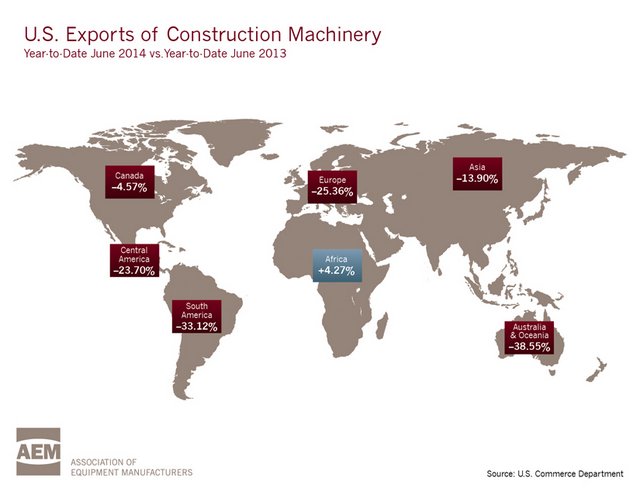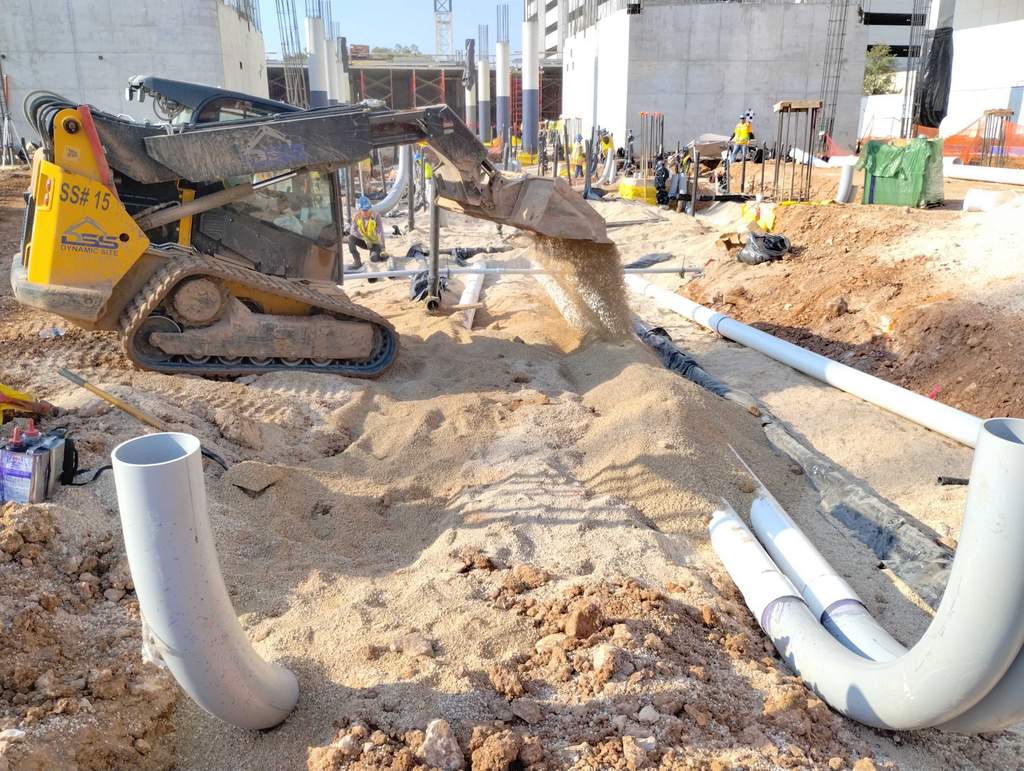AEM Report: Construction Equipment Drives U.S. Economy

The report – authored by Inforum, an economic industry research organization at the University of Maryland – underscores both the growth in the industry over the last decade, along with the threats posed by diminishing government investment in infrastructure projects and eliminating support for manufacturing exports.
From 1998 to 2013, U.S. domestic sales of construction machinery and equipment double from $25 billion to more than $52 billion.
“The construction equipment industry contributes so much to our economy, and this report illustrates the vital importance of ensuring that this industry can continue to flourish and grow,” said Dennis Slater, AEM president. “However, this report should also serve as a wake-up call to members of Congress, who can bolster the construction equipment sector by voting to reauthorize the Export-Import Bank, and finally passing a long-term, fully-funded highway bill.”
The report speaks directly to the impact of public policy issues on the construction equipment industry. Exports of construction equipment have more than tripled – from $5.5 billion to $19.5 billion – from 1998-2012, according to the report. Lawmakers are currently weighing whether to let the charter of the Export-Import Bank, which helps support many of these exports, expire.
The report also calls the trajectory of government spending on infrastructure “the biggest uncertainty” facing the industry. The report shows how infrastructure investment has been cut in half since its peak in the 1960s, and how lawmakers’ failure to invest in infrastructure going forward will hurt most Americans. Infrastructure deficiencies will cost each household an average of about $4,500 per year by 2020, the report says, a cost which will rise to almost $7,800 per year in 2040. Deficient infrastructure is also projected to reduce cumulative GDP by $900 billion over the next decade.
“Failing to invest in our infrastructure won’t just hurt the construction equipment industry,” Slater added. “All Americans should be concerned about the costs associated with congressional inaction on major infrastructure projects.”
AEM is working to push Congress to pass a long-term highway bill and to support other policies that support construction equipment manufacturing. A printed version of the report will be delivered to key members of Congress this fall.
The report is available at aem.org/construction and AEM will promote the report through a series of infographics on the I Make America Facebook account and @IMakeAmerica on Twitter.




